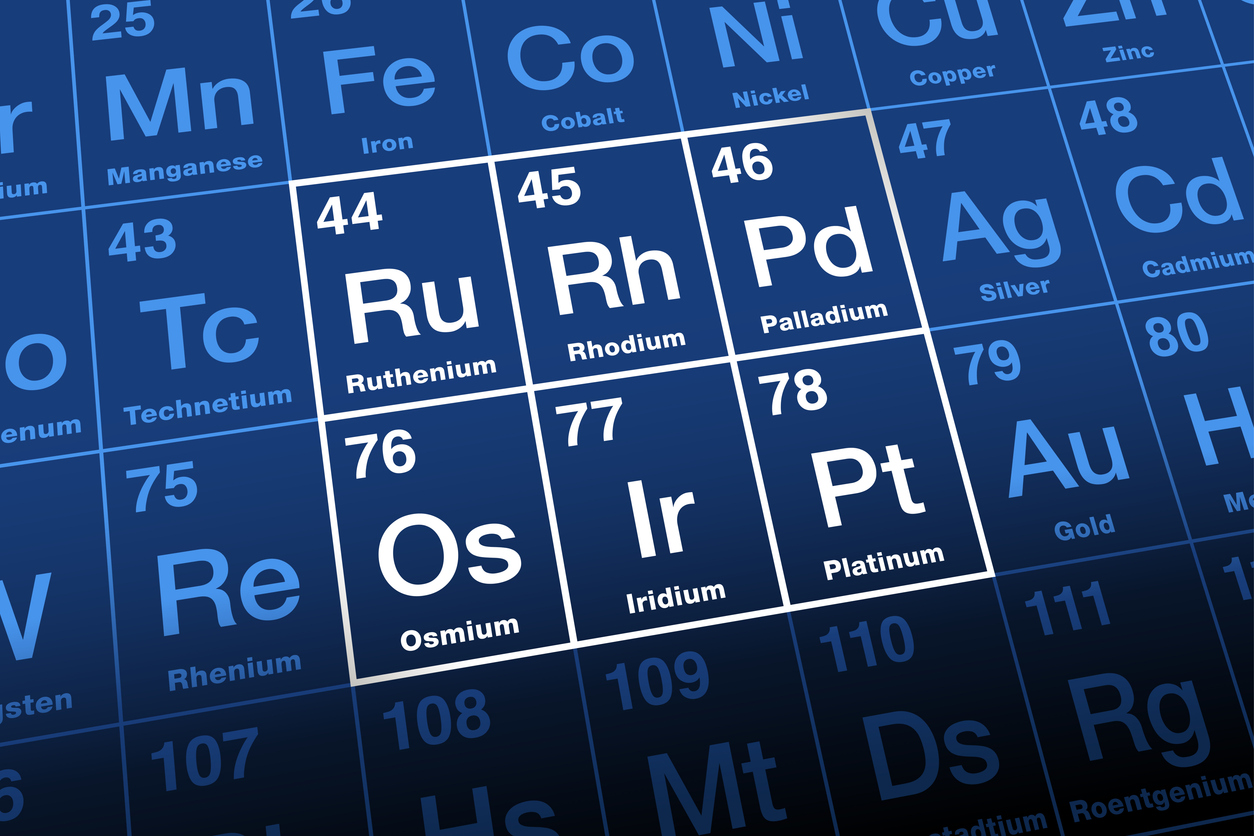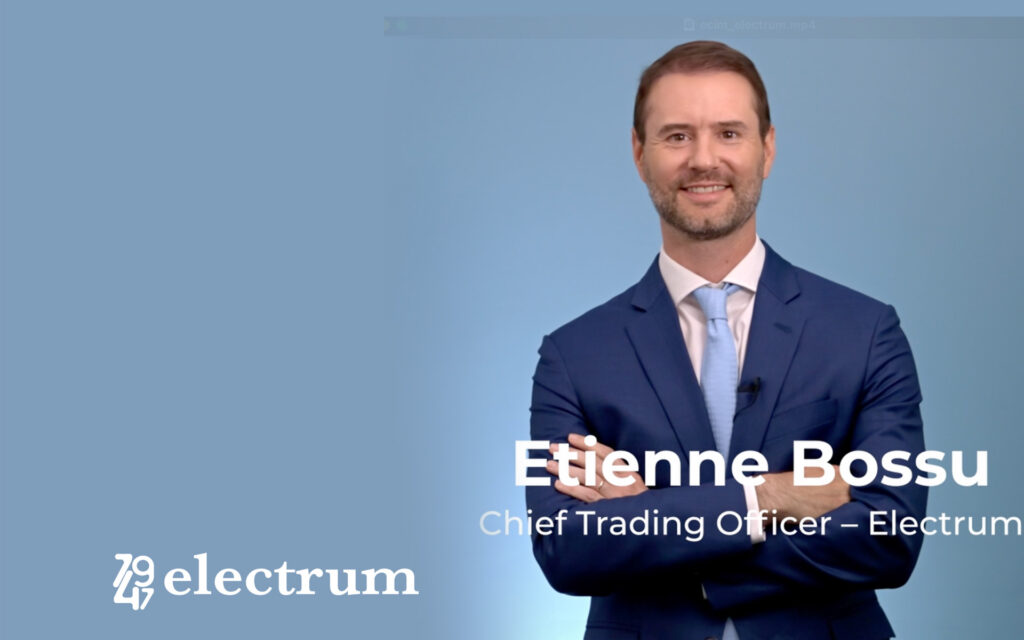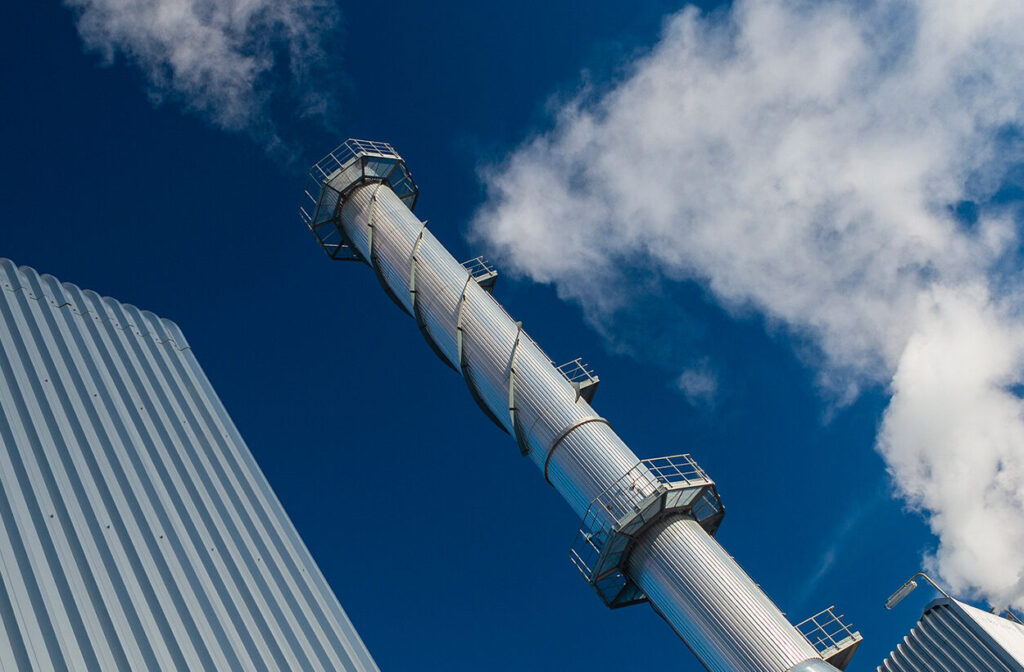Interview with Etienne Bossu, Chief Trading Officer at Electrum

Nobody’s talking about… palladium

June 13, 2024
Reading time : 10 min
Nobody’s talking about palladium… having fallen 70% in value since its previous highs above $3000/oz in 2022, the metal is in secular bearish trend and seemingly fell in disinterest.
Named after Pallas, the greek god of battle and warcraft. Palladium is a lustrous white metal belonging to the platinum group. The metal is known for its exceptional properties such as high melting point, excellent corrosion resistance, and catalytic capabilities. Chemically symbolized as Pd, it is a rare and valuable element predominantly sourced from mines in Russia, South Africa, Canada, and the United States. Most of Palladium is extracted as a byproduct of other metals, usually platinum and nickel. Russia and South Africa dominate global production, accounting for approximately 40% and 37% of the world’s supply, respectively. These countries play a pivotal role in the palladium market, with their production levels directly influencing global availability and prices. The global demand for palladium is significant, with annual consumption reaching around 250 metric tons, outstripping the annual production of approximately 210 metric tons. This imbalance has created a market deficit in recent years. However, market forecasts suggest a potential shift towards a surplus in 2025 and 2026 due to increased production and changes in demand dynamics.
Current available palladium inventories are estimated to be around 15-20 metric tons, a relatively low buffer compared to annual demand. Russia holds the largest inventory of palladium, utilizing stockpiles from state reserves to manage supply fluctuations. This strategic reserve has historically played a crucial role in stabilizing the global palladium market during periods of deficit. Approximately 70-80% of the palladium produced in Russia is traded on the London Metal Exchange (LME), making it a significant player in the global palladium market. The LME serves as a key platform for price discovery and trading of various metals, including palladium, providing liquidity and transparency to market participants. The active participation of Russian palladium in the LME facilitates global trade and ensures a steady supply of the metal to meet industrial demand worldwide. There have been discussions about potential restrictions on exports of strategic metals. However, as of the current situation, there are no significant restrictions on the export of palladium from Russia. Nevertheless, the palladium market remains sensitive to geopolitical developments, and any changes in export policies or sanctions could impact global supply and prices.
Applications of Palladium
Palladium’s primary use is in the automotive industry, where it is essential for manufacturing catalytic converters. These devices reduce harmful emissions from internal combustion engines by converting toxic gases such as carbon monoxide, hydrocarbons, and nitrogen oxides into less harmful substances like carbon dioxide and water vapor. Palladium is more efficient than platinum in this role due to its superior catalytic properties, which allow for more effective reduction of harmful emissions at lower quantities. This efficiency has surged demand, especially with stringent environmental regulations globally. For instance, the European Union’s Euro 6 standards, which set strict limits on vehicle emissions, must be met by all new cars sold from September 2014 onwards. Similarly, China’s China 6 emission standards, requiring significant reductions in nitrogen oxides and particulate matter, were fully implemented by July 2021.
Palladium is primarily used to reduce emissions from petrol engines, whereas platinum is more commonly used for diesel engines. Given the prevalence of petrol engines over diesel, especially in markets like the United States and China, palladium has historically been in higher demand than platinum. However, the high price of palladium compared to platinum in recent years led automakers to explore substituting platinum in catalytic converters. As platinum was significantly cheaper, many manufacturers began shifting to this alternative to reduce costs. Notably, palladium prices fell below platinum prices this year for the first time since 2018, marking a significant market shift. This price reversal has sparked renewed interest in palladium, as it is now relatively cheaper, leading some manufacturers to reconsider its use over platinum. Besides the auto sector, which consumes around 85% of palladium, the metal is also used in electronics (6%), dentistry (5%), and jewelry (3%).
Price Volatility and Current Bearish Trend
Palladium prices are known for their significant volatility, influenced by various factors including supply disruptions, changes in demand, and geopolitical events. Over the last two years, the market has witnessed bearish price action, primarily due to a combination of factors. The increased shift towards electric vehicles (EVs), which do not require catalytic converters, has led to concerns over future demand for palladium. Additionally, economic slowdowns and reduced car production have also dampened demand. Consequently, speculative short interest is currently at close to historic lows with nearly 45MT of COMEX shorts still being reported.
On the supply side, frequent power outages, attributed to infrastructural issues and mismanagement, have led to reduced output from South African mines. This, combined with geopolitical tensions involving Russia, creates a precarious balance between supply and demand, contributing to price volatility and given the exacerbated short positioning, the market is prone to nasty squeezes higher in prices, forcing speculative shorts to buy back their position and further contributing to price action in typical knee jerk reaction.
For now, it seems that prices have found a floor around the 900 mark and the recent increase in hybrid vehicle sales in both US and China (+78% in China in Q1 2024) means that dips have been bought. A continuation of the trend could imply that prices remain within a tight range around the $1000/oz mark until a serious catalyst ignites a new trend, up or down.
Our Publications
Etienne Bossu, Chief Trading Officer at Electrum, talks to Véronique Riches-Flores, independent macroeconomist and former Chief Economist at SG CIB, about the global economic outlook and the new market paradigm. […]
EU Carbon Market 101The European Union Emissions Trading Scheme (EU ETS) is based on a cap-and-trade system: Operators of installations including power generation, various industries and intra-European aviation covered by […]




